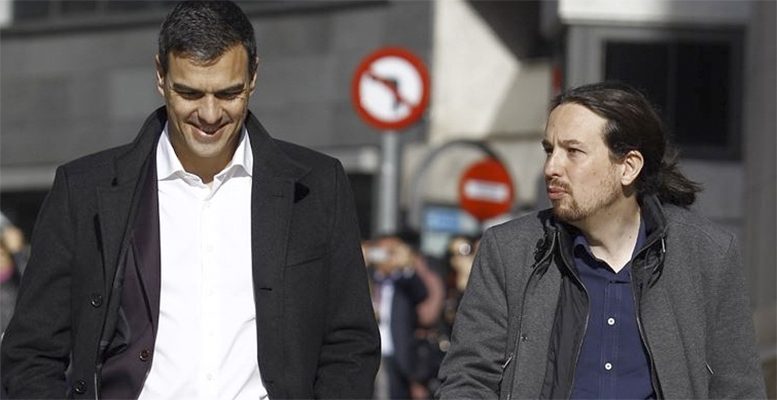The Spanish left has long had a difficult relationship with itself in the modern era. During its 14 years in government in the 1980s and 1990s, the Socialist Party (PSOE) of Felipe González split into rival factions who feuded with each other: Felipistas on one side and followers of deputy prime minister Alfonso Guerra, Guerristas, on the other. In the mid-1990s, the communist-led United Left (IU) ganged up with the right-wing Popular Party against the Socialists in what became known as “the pincer”, a manoeuvre that still makes many Spaniards on the left shudder with horror today.
Since 2014, Spain has been experiencing a new political wave: first the arrival of the anti-austerity Podemos, then the emergence of Ciudadanos to its right as a self-declared “liberal” force. Many city halls and regional administrations are now at least partly in the hands of these young Turks and Spain has a four-party system to replace the Socialist-PP duopoly of the previous decades.
But some things never seem to change and the left’s inability to unite against the right has looked like one of them. The two general elections and months of political paralysis Spain lived through between December 2015 and October 2016 saw the PSOE and Podemos locked in a battle for control of the left which turned poisonous at times and allowed the PP’s Mariano Rajoy to stay in power simply by doing what he does best – sitting back and watching.
However, in recent weeks there is a suggestion that things might have shifted. First, there was the extraordinary return to the leadership of the PSOE of Pedro Sánchez, who is more in tune with Podemos than his rivals for the post. Then there was Podemos’s recent no-confidence motion against Rajoy – it fell flat, but the flirting that took place between that party and the PSOE in the debating chamber hinted at a realignment on the left.
On Sunday, at the closing speech of his party’s national congress in Madrid, Sánchez explicitly reached out to the “political forces of change”, meaning Podemos and Ciudadanos, to form an alternative parliamentary majority that could remove Rajoy from power. Those two new parties appear to be too far apart at the moment to agree on a governing pact, with Podemos looking the more natural partner for the new-look PSOE. Podemos and the PSOE alone would not form a majority, so they would have to gather the support of an array of smaller Catalan and Basque nationalist forces with steep negotiating demands in order to do so and the task could be beyond them.
An election isn’t scheduled until 2020, although one could be called earlier, as could another no-confidence motion against Rajoy. Spain’s parliament is probably too acrimonious a place for Sánchez for to form an alternative government in the near future. But there might just be enough common ground among the parties on the left (and in the centre) to make life difficult for a prime minister who is still not used to leading a minority government.





